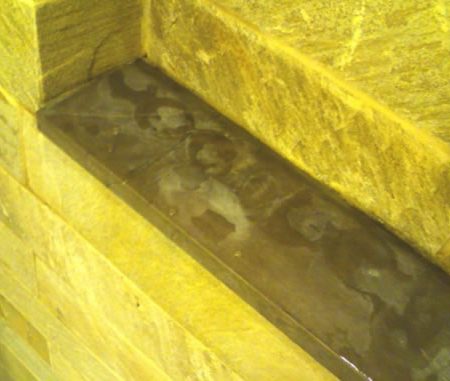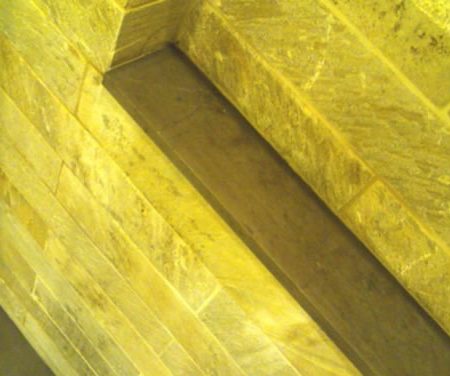Water Erosion in Marble Restoration
Erosion refers to the gradual wearing away of stone by forces such as water, chemicals, wind, ice, or gravity. When it comes to marble, erosion can occur due to several factors, including water, acidic substances, physical abrasion, and weathering over time. It may appear in showers, tub tops, countertops, floors, outdoor panels, and other applications where a stone can frequently come into contact with water (dampness), chemicals, frequent temperature changes, or other harsh environmental factors.
Erosion of marble can happen in various ways. Water can seep into microscopic pores and cracks in the marble, causing it to weaken and degrade over time. Acidic substances like certain cleaners or environmental pollutants can also react with the calcium carbonate in marble, leading to surface crumbling and deterioration.
What can be done to prevent marble erosion in a shower?
To prevent erosion in the shower, it’s essential to take proactive measures. This includes regularly using a rubber squeegee stick to remove water drops from a tile surface to prevent absorption into the marble. Keeping shower doors open so the tiles can dry faster by air circulation in the shower.
If erosion has already occurred, several methods can be used to repair marble depending on the depth of the erosion:
- Filling and Patching: For deeper fissures, a combination of epoxy resins or polyester mastics can be used to fill in the gaps and restore structural integrity (in some cases such patches may not last due to dampness).
- Deep grinding and polishing can eliminate erosion, but it’s suitable mostly for superficial erosions. The deep grinding can eliminate the erosions completely, but it may make the newly ground surface curved and uneven.
- In severe cases where large sections of marble have deeply eroded, replacement of the entire piece may be necessary. This typically involves the demolition of the damaged piece, making a template, ordering a new piece, and installation.
By understanding the causes of water erosion and taking proactive measures, you can help preserve the integrity of marble surfaces for years to come.
Before & After
White Erosion on Limestone Tub Top
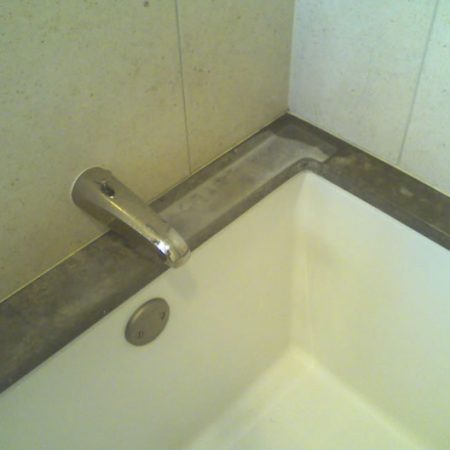
The more you concentrate on maintaining your marble in a bathroom the better would b more…
Limestone Bathtub Top. Discoloration & Erosion Removal
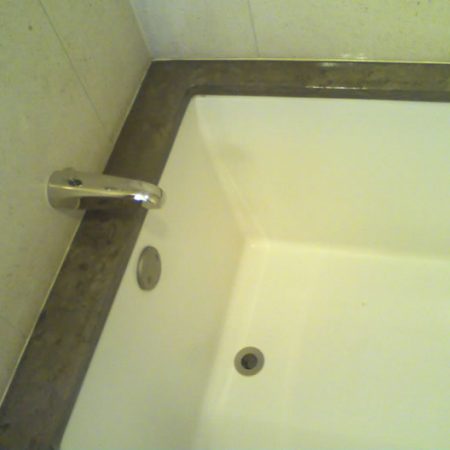
We sand out some white erosions and made some patches on remained holes. In the Orio more…
Water Erosion on Countertop (Rainforest Brown Marble)
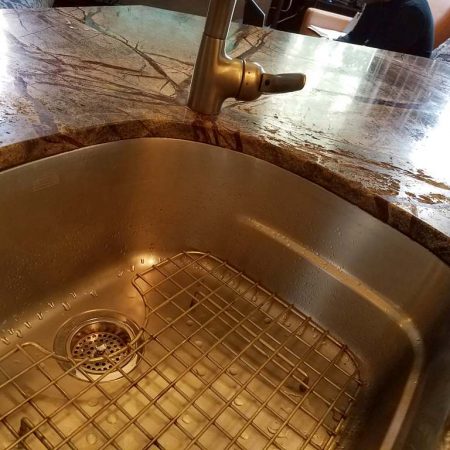
In the event that the marble surface forms water erosions, grooves, chips, scabs, or more…
Water Erosion After Repair/Smoothing on the Countertop
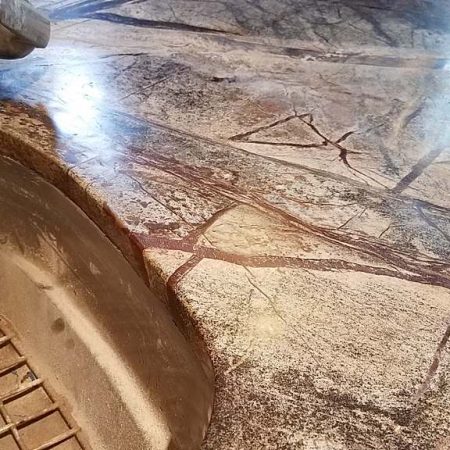
Rainforest brown marble erosion repair by filling up with colored epoxy.
Pale Erosion on Marble Walls above Bathtub
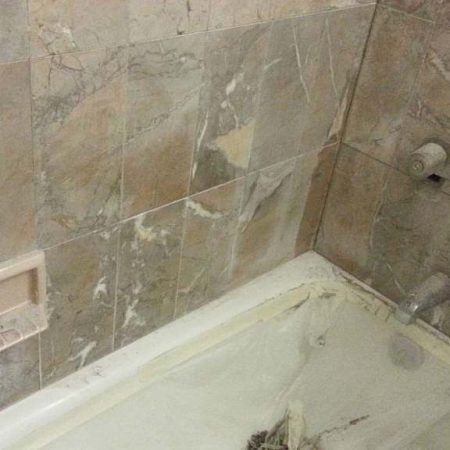
In fact, the shower walls polishing procedure is the same as on large floor spaces. more…
Pale Discolored Walls above Tub after Grouting and Restoration
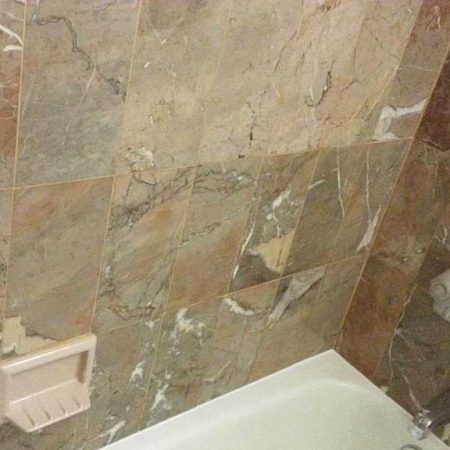
Polished natural stone on shower walls can become dull, discolored and heavily stain more…
For significant water erosion, it’s advisable to seek the assistance of a professional marble restoration specialist. These professionals have the expertise, tools, and materials necessary to assess the extent of the damage and perform the appropriate restoration procedures.
Submit Your Order or Ask a Question :
You'll get a response within a few minutes or hours and usually not longer than 24 hours.

